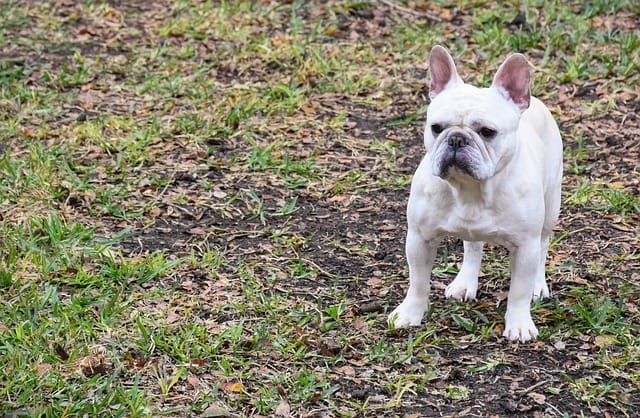
Some people already have a particular breed in mind when it comes to adding a canine companion to their family.
However, many dogs’ distinctive characteristics—such as a black-and-white Dalmatian’s spots or a French bulldog’s stubby snout—are the product of severely high levels of inbreeding, according to research released this month.
To uncover which breeds are most at risk of the negative effects that inbreeding can cause, researchers at the University of California, Los Angeles (UCLA) gathered pedigree information for 3,924 dogs representing 85 breeds.
They also looked at animals registered with the American Kennel Club (AKC), an organization founded in 1884 with the goal of “advancing the study, breeding, exhibiting, running and maintenance of quality purebred dogs.”
After examining pedigrees and historical records for these breeds going back to before they were recognized by the AKC in order to get a clear view of existing bloodlines from both within and outside the U.S., UCLA researchers found that many breeds were inbred to the point of unsustainability.
Most modern dog breeds are less than 200 years old. Inbreeding has become frequent in several breeds due to the use of studbooks to guarantee pure-bred pedigrees in the last 100 years.
At the urging of genetics, these inbred creatures, especially big dogs, acquire chronic health issues that result in expensive veterinary bills over their lifetime.
To comprehend the full impact of inbreeding on all dog breeds, the research team teamed up with Wisdom Health Genetics, the world’s largest dog DNA database, to analyze genetic data from 49,378 dogs representing 227 breeds.
According to a statement, most of the data comes from European sources.
The levels of inbreeding discovered in the data are greater than what anyone breeds would experience because different breeds have been inbred at varying rates across the globe.
The results also revealed that the English bulldog is among the most inbred dog breeds because of its popularity, but they are not alone.
Other vulnerable breeds include boxers, cocker spaniels and toy poodles. This practice can result in birth defects, crippling joint problems, respiratory issues and a shorter lifespan.
Researchers linked the survey results to pet insurance claims for non-routine checkups using data from Agria Insurance Sweden, according to Gizmodo.
Because breeders look for certain characteristics in dogs that make them appear attractive, particular breeds are more inbred than others.
Shih Tzus and pugs, for example, are bred to have extremely short snouts—often to the point of appearing flat-faced—in order to emphasize different features. These types of dog breeds are brachycephalic breeds of dogs.

They’re prone to several conditions, including stenotic nares (where the nostrils are too small for free breathing), which can cause respiratory problems like snoring, sleep apnea and even collapse.
While previous research has shown that little dogs live longer than big dogs, no one had previously reported on morbidity or the presence of disease. This study found that if dogs are smaller and less inbred, they are far healthier than their larger, more inbred counterparts.
Danika Bannasch, a veterinary geneticist at the University of California
The study also showed that bulldogs are the most unhealthy breed of dog.
They are plagued with a long list of health problems, including 38 percent of bulldogs having hip dysplasia, a crippling condition in which the hip joint doesn’t fit properly into the socket; 26 percent have elbow dysplasia, and 22 percent have a cleft palate.
“It’s incredible how inbreeding affects health,” says Bannasch. “We now know how important little things like that are and how much influence they can have on the long-term development of your dog’s overall health and ability to live a healthy life.
So it makes sense for us to seek out ways to decrease the amount of inbreeding in dogs.”
The study found that smaller, less inbred breeds are far healthier than their larger, more inbred counterparts.
This is because breeders look for certain characteristics in dogs that make them appear attractive, which often results in more inbreeding.
In addition to shorter life spans and increased vulnerability to disease, inbred dogs also have more birth defects.
Bulldogs are the most unhealthy breed of dog, with 38 percent having hip dysplasia and 22 percent having a cleft palate.
To reduce the amount of inbreeding in dogs, it is important for breeders to seek out healthy dogs with desirable traits instead of resorting to incestuous mating.
To preserve canine genetic diversity, the team emphasizes that an active approach is required to manage breeding populations.
This objective may be accomplished by utilizing genetic testing, educating breeders, and avoiding inbreeding in pups with low levels of inbreeding.


GIPHY App Key not set. Please check settings